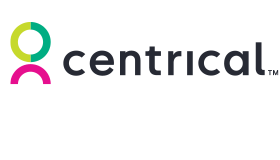Boaz Gordon at Centrical looks to answer the question of whether too much training is hurting your team’s performance.
Tell Tale Signs of Learning Escapists, Burnouts, and the Balanced Performer. We reviewed millions of data points* across performance management and learning metrics collected over a 12-month period. As expected, we saw a positive correlation between learning and performance.
However, once we started diving deeper, we uncovered an eye-opening insight. When Employees Learn More, in Some Cases, It Doesn’t Necessarily Translate Into Better Performance.
Read on to see what our data revealed about learning escapists, burnouts and why balance is best.
*This article is an installment of Centrical Labs, a series where we publish findings from our data research team. We analyze millions of performance experience data sets from MegAI, our proprietary digital AI coach and share the results to help you guide frontline employee success and growth.
Our Methodology
Centrical is an employee performance experience platform that guides frontline employee success and growth through real-time performance management, personalized learning and coaching, gamification, and voice of the employee solutions.
We serve the largest banks, insurance companies, telecommunication organizations, and BPOs globally.
Based on millions of employee data points captured across performance, learning, and wellness activities from the past 12 months, our elite cadre of data scientists analyzed and provided the insights below.
Based on voice-of-the-employee micro-surveys conducted through Centrical on a weekly basis, we identified three distinct employee cohorts: underloaded, balanced, and overloaded.
Overloaded employees are those that reported feeling overworked each week and underloaded are those that subjectively reported feeling underwhelmed with work. The balanced cohort fell in the middle.
We investigated how these cohorts learn, their completion rates, subjective and objective feedback, and how it all relates to performance. What we found was eye-opening.
We Discovered That Learning Completion May Not Always Translate Into Improved Performance.
In this article, we’ll share our findings around learning versus performance for each cohort, what this data means for your organization, and actionable next steps to help bridge the learning and performance gap.
The Findings
Underloaded employees with high learning completion rates are more likely underperform those who learn less.
When we looked for a correlation between learning completion rates and workloads, we found that those who described themselves as “underloaded” had the highest learning completion rates but were performing 8% lower than the reported balanced worker.
Below are a few additional findings around each cohort:
- Balanced employees perform 9% higher than underloaded employees.
- Balanced employees perform 4% higher than overloaded employees.
- Employees who learned more (micro-learning) felt their workload was 25% less than low learners.
- Underloaded employees show low performance regardless of the amount of learning they take.
- Balanced employees invested more time in learning and improved their performance by 28.9%
What Does It All Mean?
In short, balance is best.
Measuring Learning Completion Is Not Enough. When it comes to measuring learning effectiveness, merely measuring completion rates just doesn’t cut it.
Completion rates may be high, but our findings indicate that organizations may be more focused on checking a box versus training efficacy.
Yes, an employee completed their training. But did they really absorb those learnings and put them into practice?
Or did they breeze through a bunch of modules to check a few boxes with still no context on how to apply that learning to the job?
Generic learning vs. personalized and real-time microlearning that targets the employee’s individual knowledge gaps in the moment of need generate very different results.
The Escapist Learner:
Underloaded employees may see learning as an escape. This cohort is most likely invested in their performance but lacks clarity on their goals, so they are engaging with learning to seek new opportunities for growth.
These employees need their leaders to recognize their effort and provide better guidance and direction on where they can add value to set them on the right path forward.
Left unsupported, these potentially high value employees could leave the organization.
The Burned-Out Learner:
The data also showed that employees who were overloaded were still able to improve their performance over 33 weeks by 26.5% and significantly outperformed the underloaded cohort, but they continued to perform and learn less than balanced employees.
This leads us to believe that overloaded employees might not feel they have the bandwidth to invest time into learning even if it means long-term performance improvement.
This is a great coaching opportunity to ensure these employees are focusing on the right priorities at the right time and are receiving the right management support.
If these overloaded employees do not manage their workload, they might not be properly trained for tomorrow’s requirements and challenges.
This cohort will feel that no matter how hard they work, they are still not getting ahead. This is a major cause of burnout and attrition.
Achieving the Right Balance:
Learning completion rate measurements say nothing on their own and must be examined as part of a bigger picture.
Learning effectiveness should be tied to performance KPIs and subjective employee sentiment (workload and wellbeing feedback).
By considering each factor together, you will gain a more accurate picture to better understand where the gaps are and how to address them.
Steps You Can Take Now
Here are five recommendations for quick next steps you can take:
1. Ensure Learning Is Relevant and Delivered Just in Time.
Is your training personalized to address individual knowledge and performance gaps? Is it delivered just in time and on a continuous basis?
Does it allow for role play scenarios to practice knowledge application in a safe space? Keeping content fresh to meet the individual needs of learners doesn’t need to be a challenge.
Generative AI can help you speed up content creation making it easy to keep your frontline proficient.
2. Integrate Data for a Connected Employee Experience.
Is your data all over the place? Do you have multiple platforms your employees need to go into daily? Do your technology platforms share data easily?
If not, your employee performance experience is at risk. Centralize your data to provide your employees, managers, and organizational leaders a holistic view of the employee experience across learning, performance, and overall wellbeing.
3. Provide Clear Alignment on Goals and Set Clear Expectations.
Do you provide personalized learning and progression paths that are aligned to employee performance goals?
This will help you ensure learning is tied to individual needs and will address performance gaps.
It will also provide underloaded and overloaded employees the direction they need to succeed through clear career pathways.
4. Identify and Review Your Coaching Strategy.
Is your coaching today directive or guided? How frequent are coaching sessions? Can managers easily access the information they need to coach, and can employees take ownership of their development opportunities?
Coaching insights should be automated, delivered in real-time, and extend beyond performance and include workload, wellbeing, and learning.
5. Measure Training in Relation to Perceived Workload.
Do you collect regular feedback on perceived workload from your employees using micro-surveys? Are you recognizing warning signs of burnout?
Do you have the steps in place to prevent it? Actionable insights can help you respond in real-time before it’s too late. Look into how you are collecting feedback from your employees today.
This blog post has been re-published by kind permission of Centrical – View the Original Article
For more information about Centrical - visit the Centrical Website
Call Centre Helper is not responsible for the content of these guest blog posts. The opinions expressed in this article are those of the author, and do not necessarily reflect those of Call Centre Helper.
Author: Centrical
Published On: 16th Oct 2023 - Last modified: 9th Dec 2024
Read more about - Guest Blogs, Centrical






 Centrical provides a real-time performance management, microlearning, gamification, coaching, and voice of the employee platform for frontline teams. The solution inspires and personally guides employee success and growth by making every moment actionable.
Centrical provides a real-time performance management, microlearning, gamification, coaching, and voice of the employee platform for frontline teams. The solution inspires and personally guides employee success and growth by making every moment actionable. 








